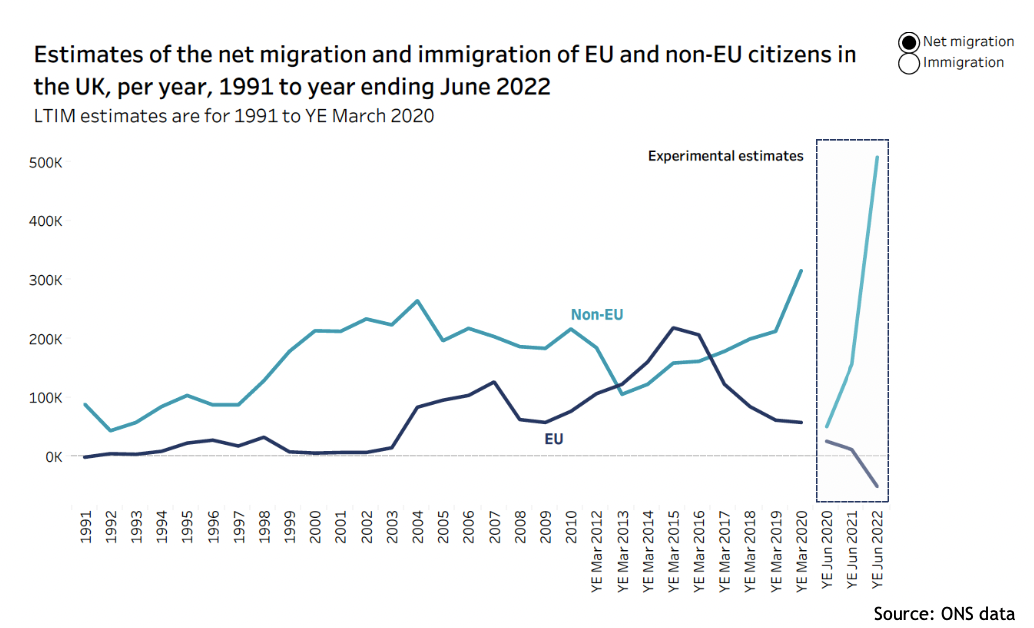Question
The graph indicates that recent evidence shows a significant decrease in the number of EU immigrants in the UK, coupled with an increase in immigration
The graph indicates that recent evidence shows a significant decrease in the number of EU immigrants in the UK, coupled with an increase in immigration from non-EU countries.
A. Using graphs, explain the effects of the outflow of EU migrant workers on output, employment, wages, and rentals in the UK in the short-run. How do these effects differ in the long-run?
B. Assuming that the cause of the EU migrant exodus is a decline in real wages, how does a reduction in the average wage rate in the UK influence the selection of EU migrants who opt to remain in the country? Given that wages in the EU are more evenly distributed than in the UK, how are non-EU migrants selected if their home countries have more unequal labor markets than the UK?

Source: ONS data 1991 1992 1993 1994 1995 1996 1997 1998 1999 2000 2001 2002 2003 2004 2005 2006 2007 2008 2009 2010 YE Mar 2012 YE Mar 2013 YE Mar 2014 YE Mar 2015 YE Mar 2016 YE Mar 2017 YE Mar 2018 YE Mar 2019 YE Mar 2020 YE Jun 2020 YE Jun 2021 YE Jun 2022 OK EU 100K 200K Non-EU 300K 400K 500K Experimental estimates LTIM estimates are for 1991 to YE March 2020 the UK, per year, 1991 to year ending June 2022 Estimates of the net migration and immigration of EU and non-EU citizens in Immigration Net migration
Step by Step Solution
There are 3 Steps involved in it
Step: 1
A Effects of the outflow of EU migrant workers on output employment wages and rentals in the UK in the shortrun and longrun In the shortrun Output The outflow of EU migrant workers can lead to a decre...
Get Instant Access to Expert-Tailored Solutions
See step-by-step solutions with expert insights and AI powered tools for academic success
Step: 2

Step: 3

Ace Your Homework with AI
Get the answers you need in no time with our AI-driven, step-by-step assistance
Get Started


